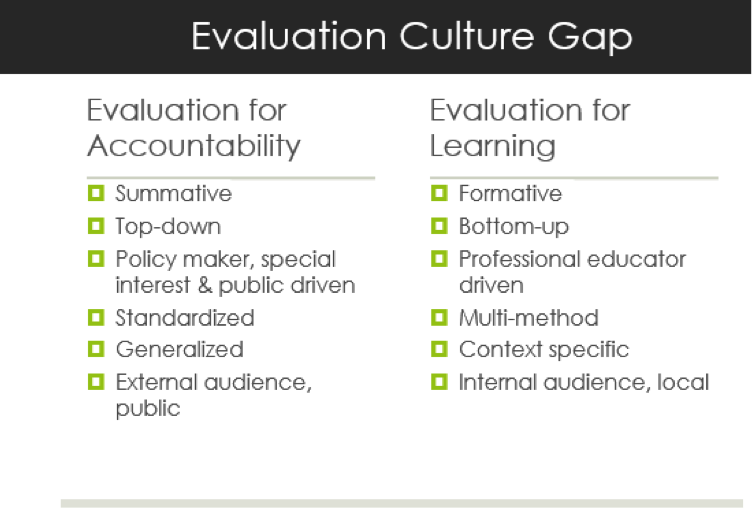I’m Chad Green, Program Analyst at Loudoun County Public Schools in Northern Virginia, and Chair of the PreK-12 Educational Evaluation TIG. Welcome to our sponsored AEA365 week in conjunction with Teacher Appreciation Week, which is celebrated from May 5-9 in the U.S.
Since 2011, I have championed our TIG’s core values below as quoted from our website.
“The PreK-12 Educational Evaluation TIG values relevant, responsive, high quality educational evaluation that reflects our beliefs in social justice, equity, and the importance of educating the whole child.”
How so? When the language and actions of my colleagues and I align with these core values, I acknowledge and celebrate them publicly. Barbara Taylor called this form of strategic dialogue “metasensemaking” in her study of elementary school principals involved in the process of organizational change. She defined it as “a form of organizational enactment used to further the potential for organizational momentum and individual motivation.” The “Walking the Talk” section of the monthly AEA Newsletter is another example of this leadership practice.
The beauty of our TIG’s values is that, as essentially contested concepts, anyone can take an active role in their interpretation and enactment. While I have had the opportunity to celebrate instances of equity and whole child education in action over the years, social justice has eluded me. I attribute this shortcoming primarily to my own lack of understanding of this fuzzy concept.
Lesson Learned: I only write this now because recently I have learned that, during a persuasive presentation by Paul Carr of Lakehead University in Canada, many people understand the role of democracy in education only in a “thin” way.
Last month a few of us from the TIG’s leadership team attended the Annual Meeting of the American Educational Research Association. In his panel presentation sponsored by the Dewey Studies SIG, Carr introduced the following framework of teacher/student engagement in democracy which builds on the seminal work of Benjamin Barber.

According to Carr, a thin connection to democracy in education is exemplified by weak linkages between the school experiences of teachers and students and the broader experiences of society in general. He argued that social justice can only be expressed on the thick end of the spectrum, in which freer forms of democracy influence all aspects of how education is organized (e.g., academic curriculum, assemblies, extra-curricular events, staff meetings, etc.).
Carr’s presentation struck a chord because it reminded me of Sandra Mathison’s panel presentation last year on her efforts to bridge the evaluation culture gap in school systems throughout British Columbia (see below). I look forward to celebrating other educational evaluators who have integrated social justice into their practice.

The American Evaluation Association is celebrating Ed Eval TIG Week with our colleagues in the PK12 Educational Evaluation Topical Interest Group. The contributions all this week to aea365 come from our Ed Eval TIG members. Do you have questions, concerns, kudos, or content to extend this aea365 contribution? Please add them in the comments section for this post on the aea365 webpage so that we may enrich our community of practice. Would you like to submit an aea365 Tip? Please send a note of interest to aea365@eval.org. aea365 is sponsored by the American Evaluation Association and provides a Tip-a-Day by and for evaluators.
